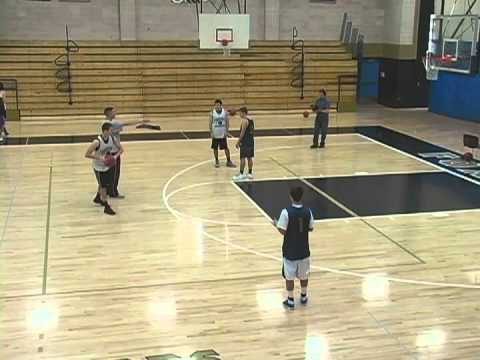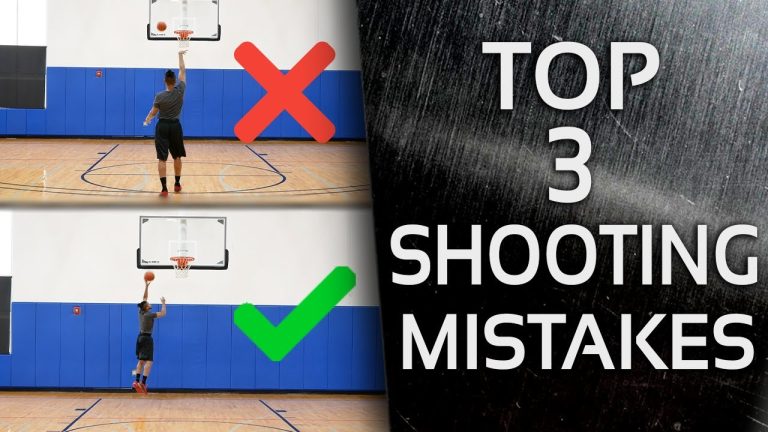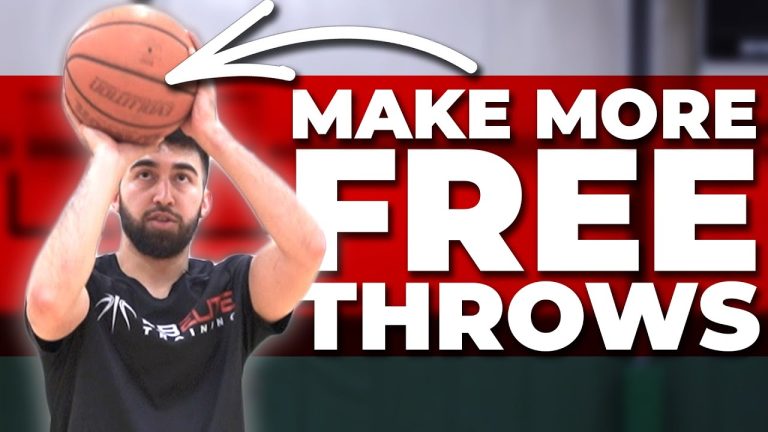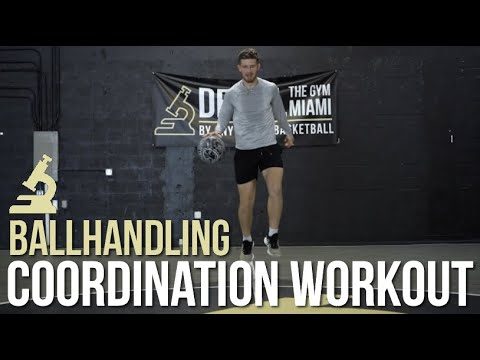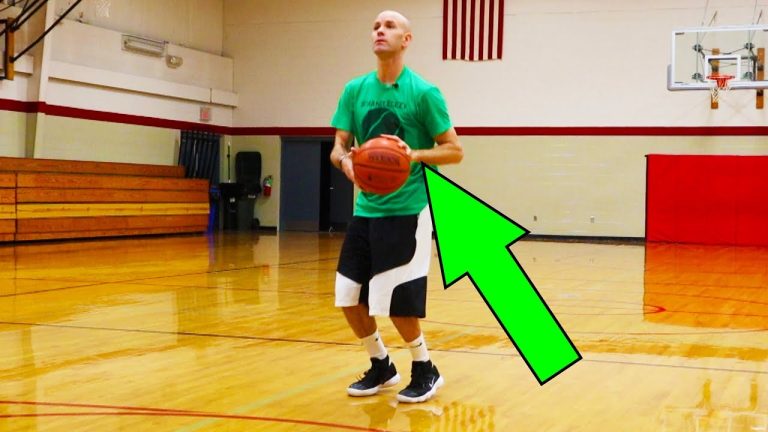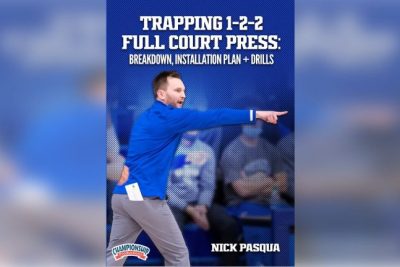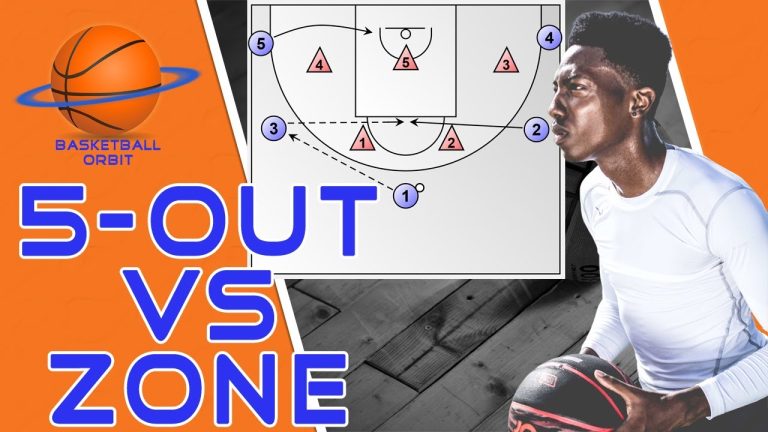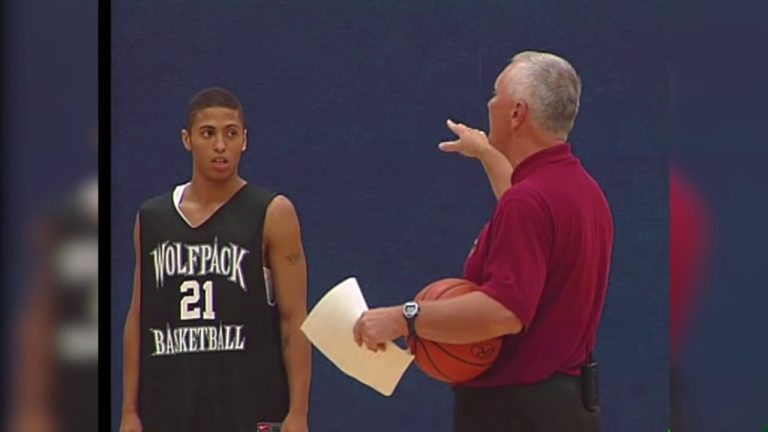Rotations in full-court press defense are the secret weapon of basketball teams aiming to disrupt their opponents’ offensive flow. This strategic defensive approach demands swift and seamless movement, as defenders relentlessly pressure the ball and deny easy passing lanes. From trapping the ball handler to switching assignments on the fly, rotations are the key to suffocating the opposition and creating turnovers. In this article, we delve into the art of rotations in full-court press defense, uncovering the essential principles and tactics that make it a formidable tool in the arsenal of any basketball team.
Advantages
- Increased Pressure: Rotations in full court press defense allow for increased pressure on the opposing team’s offense. By constantly rotating and trapping the ball handler, defenders can disrupt the flow of the offense and force turnovers. This increased pressure can lead to more steals and fast break opportunities for the defending team.
- Defensive Intensity: Full court press defense requires a high level of defensive intensity from all players on the court. The constant rotations and traps demand active engagement and quick decision-making, keeping the defense on their toes. This level of intensity can wear down the opposing team both mentally and physically, making it harder for them to execute their offense effectively.
- Creating Chaos: Rotations in full court press defense create chaos and disrupt the opposing team’s rhythm. By constantly pressuring the ball and forcing turnovers, the defense can force the offense into making rushed decisions and mistakes. This chaos can lead to easy scoring opportunities for the defending team and also disrupt the opposing team’s confidence, causing them to lose their composure.
Disadvantages
- Fatigue and stamina: Implementing rotations in a full-court press defense requires players to constantly sprint up and down the court, putting immense physical strain on their bodies. This can lead to fatigue and decreased stamina over the course of the game, potentially affecting their overall performance and ability to execute the press effectively.
- Defensive breakdowns: Rotations in a full-court press defense involve players quickly switching positions and responsibilities based on the movement of the offensive players. However, these rapid rotations can sometimes lead to miscommunications or defensive breakdowns, leaving opponents open for easy scoring opportunities. If the rotations are not executed flawlessly, it can result in giving up easy baskets and compromising the effectiveness of the press.
How can one overcome a full-court press defense?
To beat a full-court press defense, quick decision-making is key. As soon as you receive the ball, your eyes should scan the court for an open teammate. By finding the open man immediately, you can create opportunities for a quick, accurate pass that will catch the defense off guard. It is crucial to avoid soft, lob passes that can easily be intercepted. Instead, focus on passing up the floor and utilizing cutting techniques to confuse and elude the defenders. Anticipating your next move before even receiving the ball will give you an edge against the press defense.
Beating a full-court press defense requires a combination of vision and execution. As the ball handler, your primary objective should be to keep your eyes up, looking for potential passing lanes on the floor. By constantly surveying the court, you can anticipate where your teammates will be and make timely passes to exploit the defense’s vulnerabilities. In addition, cutting effectively is crucial in creating space and confusion for the defense. By constantly moving and making yourself available, you can force the defenders to make split-second decisions, which often leads to defensive breakdowns.
The key to overcoming a full-court press defense lies in proactive thinking and precise passing. Before even receiving the ball, mentally map out your options and potential passing targets. By having a plan in mind, you can make quicker decisions and execute accurate passes that bypass the defense. It is important to remember that beating the press is a team effort. Communication and coordination with your teammates are essential in successfully navigating through the pressure. By staying poised, alert, and focused on finding the open man, you can consistently break down the full-court press defense.
How can one defeat a full-court press employing a 1 3 1 zone?
To beat a 1-3-1 zone full-court press, effective passing is key. By utilizing crisp and accurate passes, you can disrupt the defense’s positioning and create openings for easy scoring opportunities. It is crucial to avoid unnecessary dribbling, as this gives the defense a chance to catch up and steal the ball. Instead, the ball handler should quickly advance down the floor, staying ahead of the defense and ensuring the ball remains secure. Forwards should only resort to dribbling when driving towards the basket or when positioning themselves for a strategic pass, maximizing the team’s chances of success.
In order to successfully overcome a 1-3-1 zone full-court press, passing is the ultimate weapon. Precise and swift passes disrupt the defense’s formation, creating gaps and openings for scoring opportunities. Dribbling should be minimized, as it allows the defense to catch up and potentially steal the ball. The ball handler’s priority should be to swiftly advance down the court, leaving the defense trailing behind and reducing the risk of turnovers. Forwards should only dribble when driving towards the basket or to position themselves for a strategic pass, ensuring a cohesive and effective offensive strategy.
What is the reason for not implementing a full-court press throughout the entire game?
In basketball, the full-court press is a high-energy defensive strategy that can greatly disrupt the opposing team’s offense. While it can be effective in short bursts, utilizing it for the entire game may not be the best approach. Constantly pressuring the opponents can lead to fatigue and potential foul trouble for the defending team. Additionally, a full-court press requires excellent communication and coordination among players, which may be difficult to maintain throughout an entire game. By strategically deploying the full-court press at key moments, teams can surprise their opponents and gain a competitive edge without sacrificing energy and focus.
One of the main drawbacks of employing the full-court press for the entire game is the risk of player fatigue. The intensity and physical demands of constantly pressuring the opposing team can exhaust players and decrease their effectiveness as the game progresses. Fatigue can lead to defensive breakdowns, slower reaction times, and an overall decrease in performance. By selectively using the full-court press during crucial moments or specific situations, teams can conserve their energy and maintain a higher level of defensive intensity when it matters the most.
Another factor to consider when deciding against a full-court press for the entire game is the potential foul trouble it may cause. The aggressive nature of the press can result in more fouls being committed by the defending team. This not only gives the opposing team opportunities to score points from the free-throw line but can also force key players to the bench due to foul disqualification. By strategically choosing when to deploy the full-court press, teams can minimize the risk of unnecessary fouls and keep their best defenders on the court for longer periods of time.
In conclusion, while the full-court press can be a highly effective defensive strategy, utilizing it for the entire game may not be the most optimal approach. By selectively employing the press during key moments, teams can conserve energy, minimize fouls, and maintain a higher level of defensive intensity when it matters the most. Striking the right balance between aggression and conservation is crucial in maximizing the effectiveness of the full-court press.
Unlocking Defensive Dominance: Mastering Full Court Press Rotations
Unlocking Defensive Dominance: Mastering Full Court Press Rotations
Paragraph 1:
In the quest for defensive dominance, mastering full court press rotations is the key. A well-executed full court press can disrupt the opponent’s offense, force turnovers, and create scoring opportunities. However, it requires impeccable teamwork, communication, and a thorough understanding of rotational principles. By unlocking the secrets of full court press rotations, teams can become a defensive force to be reckoned with.
Paragraph 2:
The foundation of effective full court press rotations lies in communication and anticipation. Players must communicate constantly, ensuring everyone is aware of their responsibilities and the movements of the opposing team. Anticipation is equally crucial, as defenders need to read the game and anticipate the next pass or movement. By seamlessly rotating and switching, defenders can trap the ball handler, deny passing lanes, and create chaos for the offense.
Paragraph 3:
To master full court press rotations, teams must also prioritize conditioning and discipline. Implementing a full court press requires tremendous energy and stamina, as players must sprint, recover, and maintain intense pressure for extended periods. Conditioning drills and workouts are vital to build endurance and improve overall fitness. Additionally, discipline is essential to avoid fouls and unnecessary risks while executing rotations. By combining communication, anticipation, conditioning, and discipline, teams can unlock the defensive dominance that comes with mastering full court press rotations.
The Defensive Edge: Perfecting Full Court Press Strategies
In the game of basketball, the full court press has become a powerful weapon for teams looking to disrupt their opponents’ offensive flow. With its intense defensive pressure and relentless pursuit of turnovers, the full court press has proven to be an effective strategy in turning the tide of a game. By implementing this strategy, teams can dictate the pace, create chaos, and force their opponents into making hurried and careless decisions. The defensive edge gained through the full court press not only disrupts the opponents’ offensive rhythm but also injects a surge of energy and momentum into the team executing it.
To perfect full court press strategies, teams must focus on three key elements: communication, anticipation, and discipline. Effective communication is crucial to ensure that each player understands their role and responsibilities within the press. By communicating effectively, players can seamlessly switch assignments, cut off passing lanes, and trap the ball handler with precision. Anticipation is another vital aspect as players must read the game, anticipate the opponent’s moves, and intercept passes. Lastly, discipline plays a pivotal role in maintaining the press for extended periods. Players must remain committed to their assignments, avoid fouls, and resist the temptation to abandon the press prematurely. By mastering these elements, teams can unleash the full potential of their full court press and become a force to be reckoned with on the defensive end.
From Chaos to Control: The Art of Full Court Press Defense
From Chaos to Control: The Art of Full Court Press Defense
In the realm of basketball, one strategy stands out as a high-risk, high-reward approach: the full court press defense. This aggressive tactic is designed to disrupt the opposing team’s offense, forcing turnovers and creating chaos on the court. With lightning-fast transitions and relentless pressure, players execute a synchronized dance, trapping the ball handler and denying easy passing lanes. The full court press defense transforms the game into a whirlwind of anticipation and intensity, compelling opponents to make hasty decisions and errant passes. It is a masterful display of controlled chaos, where the defenders dictate the tempo and seize control of the game.
Yet, amidst the frenzy, lies an artful balance between chaos and control. The success of the full court press defense lies not only in its aggression but also in the discipline and coordination of the defenders. Each player must possess an acute understanding of their role and execute it flawlessly. It requires a collective effort, where communication and trust are paramount. The defenders must read the game, anticipate the opponent’s moves, and react swiftly with precision. With a strategic blend of chaos and control, the full court press defense becomes a formidable weapon, capable of turning the tide of any game and leaving opponents in awe.
Master the Game: Full Court Press Rotations Demystified
Master the Game: Full Court Press Rotations Demystified
Are you tired of feeling overwhelmed when it comes to full court press rotations? Look no further! In this guide, we will break down the complexities of this defensive strategy into three simple, concise steps. By mastering these rotations, you will be able to effectively disrupt your opponents’ offense and take your team’s game to the next level.
Step 1: Establish Communication
The key to successful full court press rotations is effective communication among teammates. Before the game even begins, make sure everyone is on the same page regarding their responsibilities. Assign specific roles to each player and establish clear signals for when to switch or trap the ball. By maintaining open lines of communication throughout the game, you will be able to anticipate and react to your opponents’ movements more efficiently.
Step 2: Timing is Everything
Timing plays a crucial role in executing flawless full court press rotations. It’s important to know when to initiate the press and when to fall back into a half-court defense. Anticipate the moment when your opponents become vulnerable and seize the opportunity to apply intense pressure. By studying your opponents’ play style and recognizing patterns, you can time your rotations to perfection, making it difficult for them to find gaps in your defense.
Step 3: Trust and Support
Lastly, trust and support among teammates are essential for successful full court press rotations. Each player must have confidence in their teammates’ abilities and be willing to provide support when needed. In high-pressure situations, it’s crucial to remember that you are a team and that everyone has a role to play. By trusting each other and working together, you can effectively execute full court press rotations and leave your opponents struggling to find a way past your relentless defense.
In conclusion, mastering full court press rotations may seem daunting at first, but by following these three steps, you can simplify and demystify this defensive strategy. Remember to establish communication, perfect your timing, and foster trust and support among teammates. With practice and dedication, you will be able to dominate the game and become a force to be reckoned with on the court.
Incorporating rotations in full court press defense is a strategic tactic that can be the game-changer for any basketball team. By seamlessly shifting and adapting to the movements of the opposing team, defenders can disrupt their rhythm and create valuable opportunities for turnovers. The ability to execute quick and effective rotations not only showcases the team’s defensive prowess but also demonstrates their commitment to a relentless and aggressive style of play. Mastering this aspect of the game can undoubtedly elevate a team’s performance and potentially lead them to victory.

